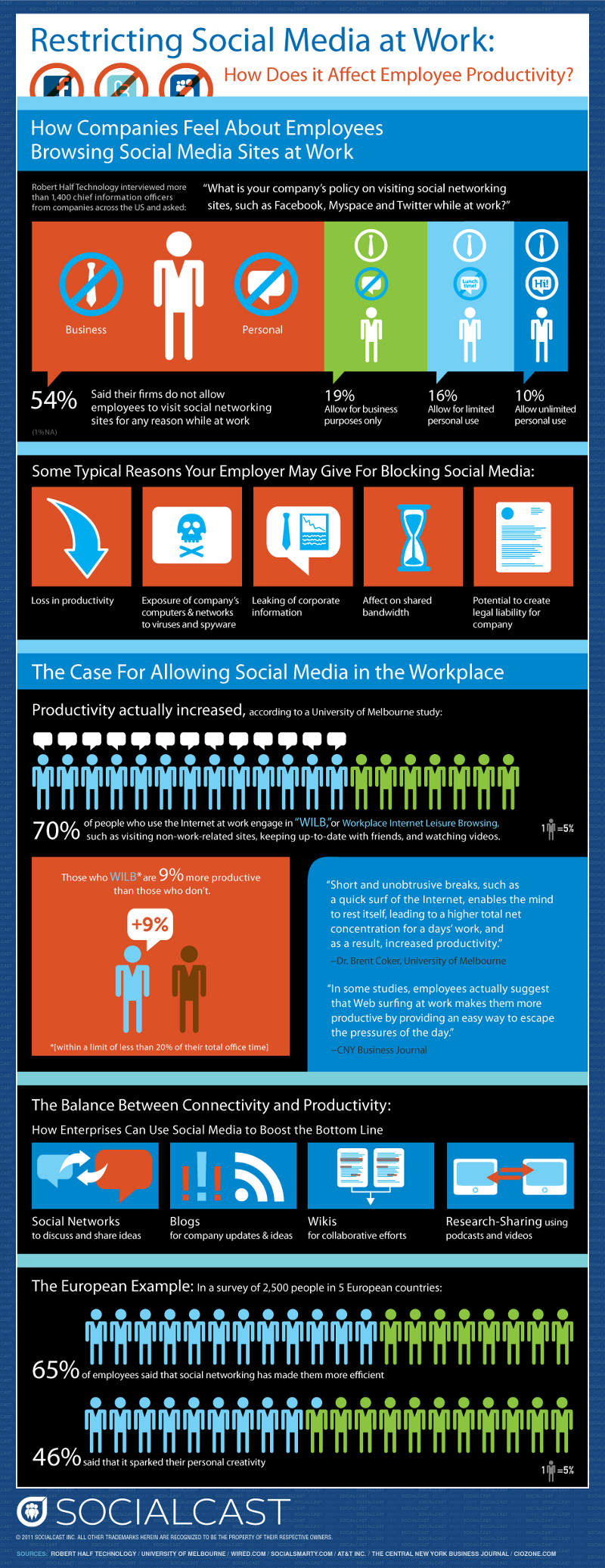
The Argument for Restricting Social Media at Work
The rise of social media networks has brought with it many benefits, but also new challenges. Companies have to determine how using social media sites at work can affect employee productivity.
Different organisations have different rules and policies when it comes to social networking sites such as Facebook and Twitter. A survey by Robert Half Technology questioned over 1400 chief information officers from companies throughout the U.S. to find out their policy on visit social media sites. The results were:
• 54 % don’t allow employees to access social networking site under any circumstance while at work.
• 19 % allow some access for strictly business purposes only
• 16 % allow limited access for personal use
• 10 % allow unlimited and unrestricted access for personal use
Why do some companies block social media sites?
Companies have various reasons for restricting use of social networks. Some main reasons include:
• Loss of productivity
• Potential exposure of computers and networks to spyware, malware and viruses
• Greater chance of corporate information being leaked
• Possibility of legal liability for the company
What is the case for allowing social networks use in the workplace?
This issue isn’t one sided. Some people are in favour of allowing social media usage at work. According to studies from the University of Melbourne, social media can in fact increase productivity.
Workplace Internet Leisure Browsing (WILB) includes visiting non- work related sites, checking on updates from friends and watching online videos. 70 % of workers who use the internet at work engage in WILB. Research has shown that those who do engage in WILB are on average 9 % more productive than those who don’t. However, the internet usage has to be balanced and within reason. WILB should be kept to less than 20 % of total office time for it to increase productivity.
Some web browsing throughout the day can often help ease the pressures of the job, and improve efficiency when getting back to work. Short breaks give the mind a short rest and result in higher concentration for the rest of the day, which means more work can be achieved.
Balancing connectivity and productivity
Social media can be used in enterprise to directly boost productivity and the bottom line. Some use connectivity tools include:
• Social Networks – for sharing and discussing ideas
• Blogs – For posting company ideas and updates
• Wikis – Ideal for collaborative tasks and efforts
• Research Sharing – By utilizing videos and podcasts
A survey of 2500 people in European countries has revealed that 65 % of employees find that they work more efficiently with some social network use. Also 46 % said that social media helps spark their personal creativity.
Although millions of people visit Brandon's blog each month, his path to success was not easy. Go here to read his incredible story, "From Disabled and $500k in Debt to a Pro Blogger with 5 Million Monthly Visitors." If you want to send Brandon a quick message, then visit his contact page here.
